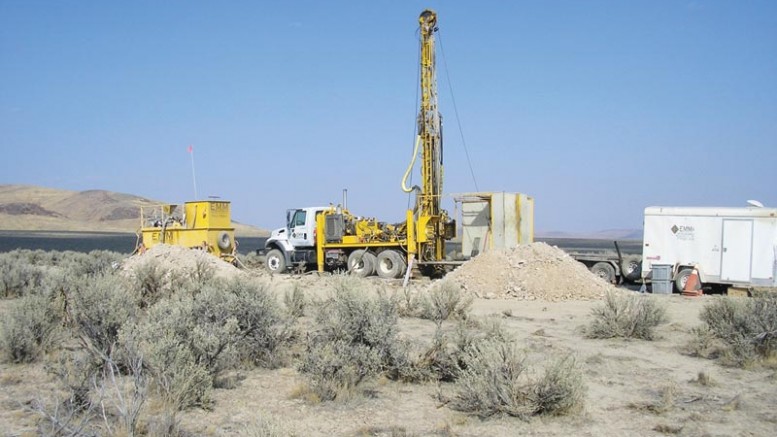VANCOUVER — Management of Western Lithium (TSX: WLC; US-OTC: WLCDF) finds itself in quite the fortuitous position following the recent surge of interest in the global lithium industry. The company negotiated a merger with South American-focused Lithium Americas in mid-2015, and sits on two advanced-stage projects that appear well positioned to address an emerging deficit in lithium carbonate and hydroxide markets.
Western Lithium is advancing the Kings Valley clay-hosted lithium deposit in Nevada’s Kings Valley. The area hosts North America’s only producing lithium operation — Albemarle’s (NYSE: ALB) Silver Peak brine facility — and has subsequently emerged as a hot spot for speculators, due to a US$5-billion “gigafactory” Tesla Motors (NASDAQ: TSLA) is building outside of Reno.
Based on a March 2014 prefeasibility study, Kings Valley hosts 27 million proven and probable tonnes grading 0.4% lithium, 3.9% potassium and 1.4% sodium. The development would advance in two stages, with an initial build costing US$248 million, and a second phase costing US$161 million. The plan would carry a 24% after-tax net present value at an 8% discount rate, along with a 20% internal rate of return.
“The whole thesis around lithium being an important mineral really resonated with us prior to 2008. So we put our claims on Kings Valley, which is recognized as one of the largest lithium deposits in the world,” president Jay Chmelauskas said during an interview.
“We’ve developed the project through various stages of engineering and demonstration plants over the years, despite some definite highs and lows in the lithium space. We’ve remained confident in the business model through it all, but I don’t think any of us saw the industry gaining momentum like it is today,” he added.
Kings Valley will be the first clay-hosted lithium mine in the world. Western Lithium plans to recover lithium from clays via a proprietary process it tested at a pilot plant in Germany last year. The end product, however, will be quite similar to what is produced from a traditional lithium brine deposit.
The pilot testing was scheduled to end in late January, which will set the stage for an upcoming feasibility study. Western Lithium will then proceed through permitting under the Bureau of Land Management and hopes to get the project into production by early 2019.
The company has gone through the permitting process on a similar — albeit smaller — operation with its Organoclay Hectatone subsidiary, which produces hectorite clay additives used in oil-and-gas drilling fluids.
“We’ve always focused our attention on the development side because we believe the lithium business is not an exploration business,” Chmelauskas continued. “A lot of these major lithium deposits were discovered in the past, and it really becomes an engineering exercise that’s about getting known deposits into production. By combining our two projects we’ve focused the industry on one company that has the position to be the next producer.”
Western Lithium may not have anticipated the boom in lithium prices over the past six months, but it was just such an opportunity the company was hoping for when it picked up the Cauchari–Olaroz lithium brine deposit in the Lithium Americas merger.
The project sits across two salt lakes on Argentina’s Puna Plateau and hosts 2.7 million tonnes lithium carbonate equivalent (LCE) at a lithium cut-off grade of 354 milligrams per litre.
A feasibilty study released in 2012 outlined a US$315-million development scenario at Cauchari–Olaroz. The study assumes the project is built in two stages, with each stage consisting of a 20,000-tonne-per-year lithium carbonate facility and a 40,000-tonne-per-year potash facility.
Western Lithium is pursuing a joint-venture agreement with South Korean multinational Posco that it hopes will lead to initial production at Cauchari–Olaroz in early 2017. Posco will contribute its proprietary lithium extraction technologies for production of lithium carbonate and lithium hydroxide. The companies estimate that the first stage of the plant would produce up to 2,500 tonnes of LCE annually, with the project eventually ramping up to 20,000 tonnes.
“When it comes to brine lithium projects there are many factors that determine whether a project will work. You have to have a major focus on chemistry and engineering, because not all deposits are economically recoverable. The best brine deposits are actually in the Atacama Desert in Chile and Argentina,” Chmelauskas said.
“We’re now developing two world-scale lithium projects, in what I believe are two very good jurisdictions, at a time where the mineral is becoming important. There are four main suppliers right now, with a fifth coming online. We see our assets giving us an opportunity to become another major producer.”
And Western Lithium has raised capital as market conditions have improved. In November the company closed a US$5-million line of credit with privately owned hedge fund Geologic Resource Partners. Meanwhile, Western Lithium closed the final tranche of a US$5-million non-brokered private placement with Thailand’s Bangchak Petroleum in late December.
The company has traded within a 52-week range of 25¢ to 96¢, and closed at 40¢ per share at press time. Western Lithium has 291 million shares outstanding for a $110.4-million market capitalization.


IF Western Lithium can ink a contract with POSCO that will be Major in moving the pps upwards swiftly !!!